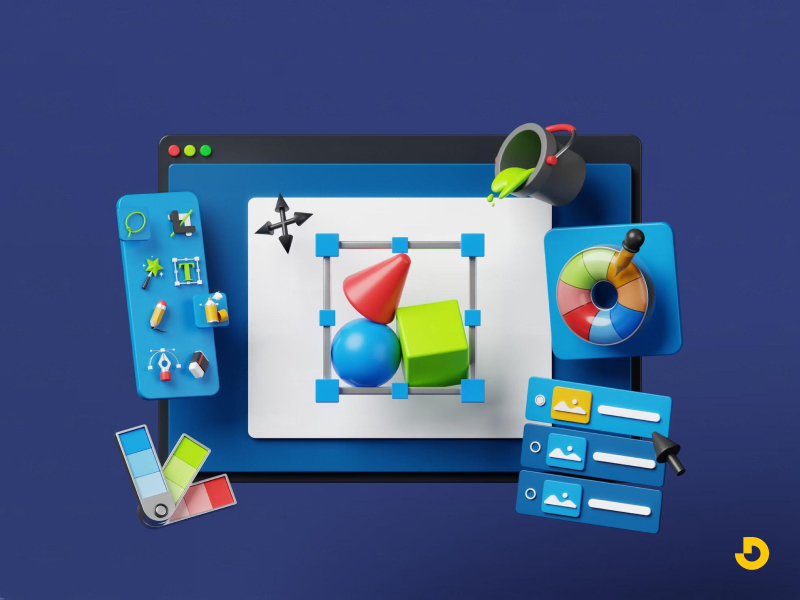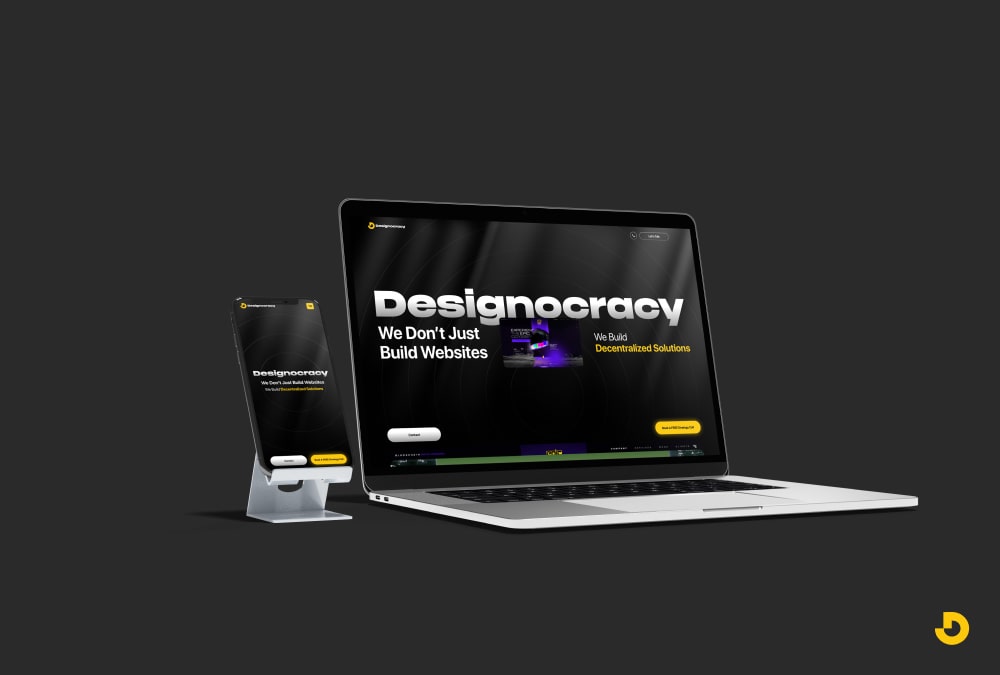If you're just starting to explore web application development, don't worry. It can seem intimidating at first, but once you break it down, it becomes more manageable. This guide will help you understand the basics and get you started on your journey.
What is Web Application Development?
Web application development is a software development process that involves the design and creation of applications that run on web browsers. Unlike traditional software applications that are stored in a computer, web applications like Google Docs, Facebook, or shopping websites can be accessed using browsers. These applications are also accessed on the cloud, enhancing their usability, and thus, are referred to as web applications.
Creating web applications requires that you write software that interfaces with the user through the web. This frontend is visually appealing and the backend is responsible for the storage and processing. The unique advantage of web applications is that they can be accessed on any device as long as there is internet connectivity. This also means that there is no software that requires downloading.
Why Should You Learn Web Application Development?
It is easy to think that there is no reason to learn web application development. However, it turns out there are a handful of reasons to make you want to learn it.

High Demand for Web Developers: Businesses, whether big or small, are using the internet as their primary selling platform, and with that comes the demand for skilled web application developers to create and look after their applications.
Creative Opportunities: The real-world problems can be turned into business opportunities by a user-centric designing of applications that entertain users or help in streamlining business operations.
Flexibility: The creativity and fun that comes with app development is further bolstered by apps being able to be used on different platforms.
Building innovative applications that can have a deep reach and useful impact starts with a journey through developing skills for a web app.
Personal Story Opportunity:
Reflect on your very first web project. It could have been the simplest of things like a to do app or a personal blog. Relating that experience can highlight the journey of transforming basic concepts into working prototypes, despite the imperfections that accompanied the early iterations.
How Does Web Application Development Work?
A simplified web application flow can help to illustrate the complexities in the applications.

Frontend (Client-Side)
The frontend is often regarded as the face of the app and hence, the most important part which the users interact with. The layout, buttons, text and the overall aesthetics fall into design. HTML, CSS, and JavaScript are used to build the frontend.
The basics of structure are provided by HTML.
CSS is used for styling and design.
Interactivity is added by JavaScript, for example, performing a specific action when a button is clicked.
Backend (Server-Side)
The backend refers to the part of the system that handles business logic and system integrations. It automatically process data, sensors and user's requests to link everything together. Moreover, a user's profile and information can be retrieved or logged to a social media or banking application by performing a username and password verification at the backend. For backend, the common programming languages and frameworks used are Node.js, Python and Ruby on Rails.
Database
Database management systems assist in the storage and management of various types of information in an organized manner. For example, social media and web applications assist in the storage of user profile information, user-created posts, comments and other relevant information in a database. Other such databases that assist in storing this data can be MySQL or MongoDB.
Personal Story Opportunity:
Please make a personal narrative about a struggle that comes with building a web app such as relating a story on how they designed a backend and the database they selected. It could also detail the matter of improving data structuring principles to aid the novices.
The Equipment Needed to Launch
If you are planning to start a web app, here are some suggestions about tools that will be the most helpful for you.
Browsers: Other than the tools listed, any web browser such as Firefox or Google Chrome that will enable you test your codes will also be helpful.
Foundational Coding Skills: Commence with the learning of HTML, CSS, and JavaScript. There are a number of free resources available which can help you acquire these basic web development skills.
Remember, practice makes perfect. Begin with a simple project and, as you develop your skills, gradually tackle more advanced projects.
Popular Frameworks and Libraries
After mastering the basic skills, you can lean towards frameworks and libraries which can simplify and expedite development. These frameworks and libraries offer scripts that can be used to develop sophisticated components of your web application.
React: Used for the construction of user interfaces, it is a JavaScript library that is very useful in the development of interactive applications (e.g. social network and e-commerce applications).
Angular: This is a web application framework for the development of interactive internet applications. It is useful when sophisticated functions such as live updates need to be processed.
Vue.js: This framework is very simple to understand and thus allows for user flexibility. It is perfect for the development of simple to moderately complex web applications.
Applying these frameworks and libraries will simplify your work as a software developer and in the long run, you will be able to develop more complex applications in lesser time.
The Importance of Web Application Design and Development
Code isn't everything. Design affects how a user interacts with your web application. Your app needs to be functional and easy to navigate, which requires a well-organized and clean design.

With design-oriented companies such as The Designocracy, The Designocracy specializes in creating visually appealing web applications. Their experience with building user-friendly systems ensures a web application stands out and enhances user experience.
Doing and Learning
You can learn web application development by practicing. Start with personal projects, incrementally scaling up as you get more comfortable. Everyone starts small, with a personal portfolio or a simple to-do list app. New concepts and skills can be added over time, with enhanced functionality of a login or commenting system.
Personal Story Opportunity
Recall how you felt finishing your first web application. Describe the thrill of seeing it work for the first time, which can help motivate others to persevere through personal hardships.
Potential Issues You May Encounter
Like with any new skill, there are likely to be obstacles. Here are a few that might pose issues:
Debugging: Issues will arise, and consequently, there will be problems you need to troubleshoot within your code. Debugging is a foundational skill in web development, and with repeated attempts, it becomes a lot easier.
Browser Compatibility: Certain web apps need to be usable on all browsers. For instance, what looks nice and functions perfectly on Chrome might not work well on Safari. Ensuring your application is compatible across all browsers will be a test and tweak process.
Mobile Responsiveness: A great number of people are browsing the web on mobile devices. Therefore, your application should be responsive and change the layout of its features based on the sizing of the screen.
Try not to let these issues frustrate you. They are common to all developers, and the more you tackle, the more adept you become.
Web Application Development Learning Resources
The following resources will be helpful on your journey:

FreeCodeCamp: Provides free courses in which learners are taken step by step from beginner to advanced web developers.
Codecademy: Provides lessons of interaction where learners are taught to code and build web applications.
MDN web docs: Mozilla's web docs provide official documentation and are a goldmine for all web development resources.
Use these resources and continue to acquire new knowledge. You will be amazed at how quickly a novice can advance to developing an actual web application.
| Key Aspect |
What You Need to Know |
Tools & Technologies |
Pro Tips |
| Fundamentals |
Web apps run in browsers (no installation needed) and combine frontend presentation with backend processing. Unlike websites, they handle complex user interactions and data processing.
|
HTML, CSS, JavaScript |
Start with simple projects like to-do lists before complex applications |
| Frontend Development |
The visual interface users interact with. Requires responsive design that works across devices and browsers. Focus on intuitive navigation and fast loading.
|
React, Angular, Vue.js |
Learn JavaScript thoroughly before jumping to frameworks |
| Backend Development |
Handles business logic, data processing, and security. Manages user authentication, database interactions, and server configuration.
|
Node.js, Python (Django), Ruby on Rails |
Begin with REST APIs before exploring GraphQL |
| Database Management |
Stores and retrieves application data. SQL databases offer structure while NoSQL provides flexibility for unstructured data.
|
MySQL, PostgreSQL, MongoDB |
Normalize your database structure to avoid data redundancy |
| The Designocracy Advantage |
Professional teams combine aesthetic design with robust functionality. Case study: Built an e-commerce platform that increased client sales by 140% through optimized UX.
|
Custom solutions |
Partner with experts for complex projects |
| Learning Path |
- Master HTML/CSS/JavaScript basics
- Build simple projects
- Learn a frontend framework
- Add backend skills
- Develop full-stack applications
|
freeCodeCamp, Codecademy, MDN Docs |
Build a portfolio with 3-5 substantial projects |
| Common Challenges |
- Browser compatibility issues
- Mobile responsiveness
- Performance optimization
- Security vulnerabilities
|
Chrome DevTools, ESLint |
Test early and often across different devices |
| Career Outlook |
Web developers earn $75,000-$120,000 annually. Full-stack developers are in particularly high demand. The field is projected to grow 23% through 2031.
|
GitHub portfolio |
Contribute to open-source projects to gain experience |
Conclusion
The journey to becoming proficient in web application development can be a bit daunting at first, but it becomes increasingly enjoyable and fulfilling once you master the core concepts. It helps to start with small projects, continuous iteration, and an openness to failure. Every error helps you learn, and every tiny success adds up to the skills to create something wondrous.
Learning any new endeavor follows a similar pattern: the deeper your investment in time and effort, the greater the returns. In no time at all, you will be proficient at developing complex web applications that will be highly appreciated by users.








